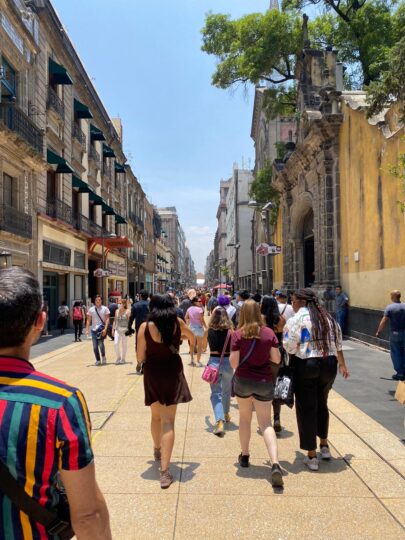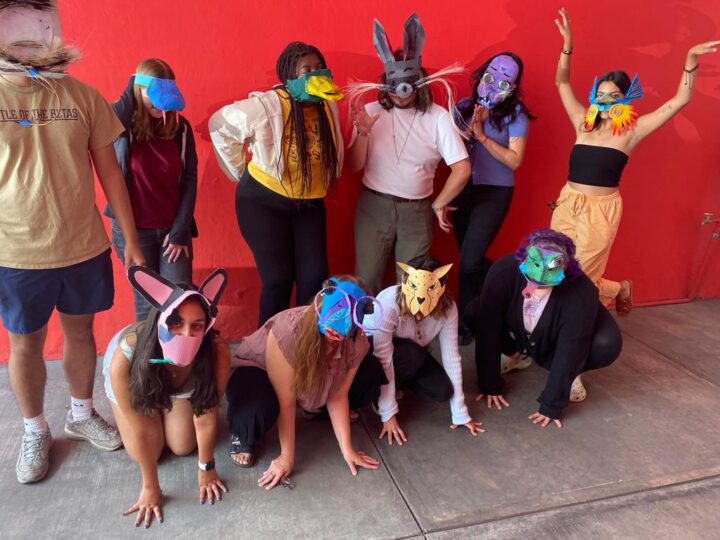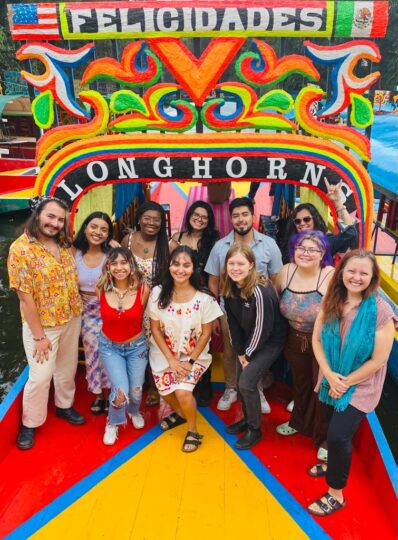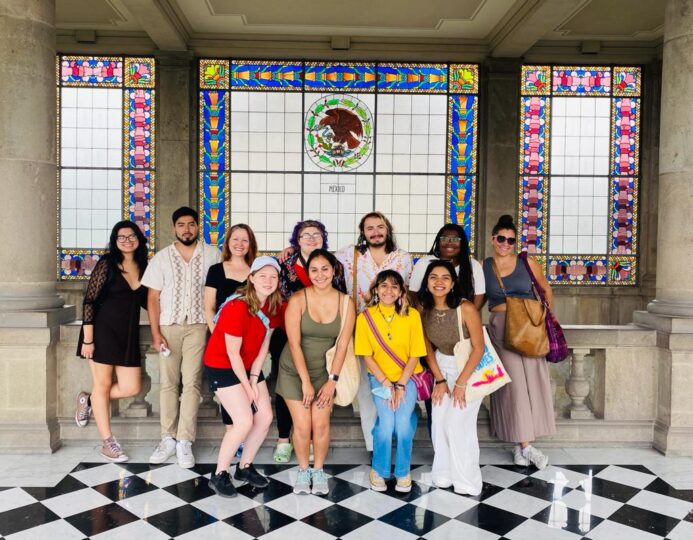At the beginning of the summer, while many students and faculty travelled home for the break or set off on much anticipated vacations, faculty member Roxanne Schroeder-Arce and nine students embarked on a different journey. Together, they travelled to Mexico City for a month-long Maymester course entitled Engaging the Arts as Audience – Mexican Arts and Youth, where they studied the breathtaking artwork of Mexican artists and the impact of arts education on children in Mexico City. We recently sat down with Schroeder-Arce to get an inside look at the program, from mask-making to soaking in the local art scene through various exhibits, performances and rehearsals.
Where did you travel for the Engaging the Arts as Audience – Mexican Arts and Youth course? How many students travelled with you?
Schroeder-Arce: Nine students and I were in Mexico City for nearly four weeks. We all stayed in a beautiful neighborhood called La Condesa, near Chapultepec Park. Our classroom was in an art gallery near there as well. We mostly traveled within Mexico City to visual arts exhibits/galleries and dance, theatre and music performances. We took in a lot of art!

We visited other cultural and historical spaces in Mexico City such as the Papalote Children’s Museum, the Anthropology Museum, the zocalo and many markets, parks and eating places. For some of our longer (two-hour or so) trips, Leslie Moody Castro and her team arranged a van for us. Together, we traveled to places such as Teotihuacán, Xochimilco, a local baseball game and nearby arts schools and community centers to witness rehearsals and classes.
What was the makeup of your group of students, major/department wise?
The Maymester was designed for students across the University, with opportunities for students to engage with the materials and reach the learning objectives regardless of their experience with the arts and with children. Nine students went on the Maymester including four UTeach Theatre students, one from Art and Art History, two from International Relations, one from Government and one from Mexican American and Latino Studies.
Talk about the coursework that was associated with this program. What were students studying and how did working in a different country deepen their learning of these topics?
This course was specifically designed to be situated in Mexico City. Learning outcomes included gaining an appreciation of Mexican arts specifically created for children; developing the ability to identify a variety of current and historical Mexican artists; understanding the influences of Mexican art and artists on the U.S. and vice versa. Being in Mexico City, experiencing live performances and visual arts with Mexican audiences (and specifically youth) was critical to reaching these learning objectives. We also had several Mexican guest artists, one for a full week. Not only were the students experiencing the arts, but they were reflecting on their experiences through a mask-making project led by Mexican interdisciplinary artist Daniel Loyola.

What were the goals of this Maymester course? How do you feel they were met or exceeded?
The goals of the Maymester were greater than the course objectives. I was so excited to travel with students to another country to study the arts and youth, especially after learning that one of the students had never been on an airplane and another had never seen a live theatrical production. There were so many firsts! As a teacher, getting to witness those experiences is the best. My family never traveled when I was a child, so when I got to study abroad in college, it was truly life changing for me and I was thrilled to get to be with students as they had a similar experience. The students shared a devised reflective performance with a few audience members on our final day which illustrated their learning about the arts, about their own identity, about their relationship to Mexico City and about their role as a global citizen. I was blown away by their self-articulated learning and growth as students and human beings.

What was your favorite part of the trip (course-related or otherwise)?
Every day was an adventure, to be sure. When we reflected on the last day, I asked each student to share what their favorite part of the trip was and their responses really varied. Some named a particular performance we saw together; others spoke of eating tlacoyos while peacefully soaking in the beauty of Xochimilco; some chose watching young people learning music at the Ollin Yoliztli arts school; many reminisced about the fandango we had with live music and dancing in their shared Airbnb; still others loved their day together at Six Flags Mexico. I truly can’t choose a favorite. Perhaps listening to the students reflect on their experiences on a daily basis was the most fulfilling part of the trip for me, or when those who were not fluent in Spanish started speaking with more confidence, or when they showed agency and figured out how to get to places, or maybe when they demonstrated respect and appreciation of Mexico City and its children and the arts.

The May Term Abroad course Engaging the Arts as Audience – Mexican Arts and Youth was one of many education abroad programs through Texas Global. The course was sponsored by The University of Texas at Austin College of Fine Arts with additional faculty and guest artist support by the Teresa Lozano Long Institute of Latin American Studies and the Department of Theatre and Dance.

